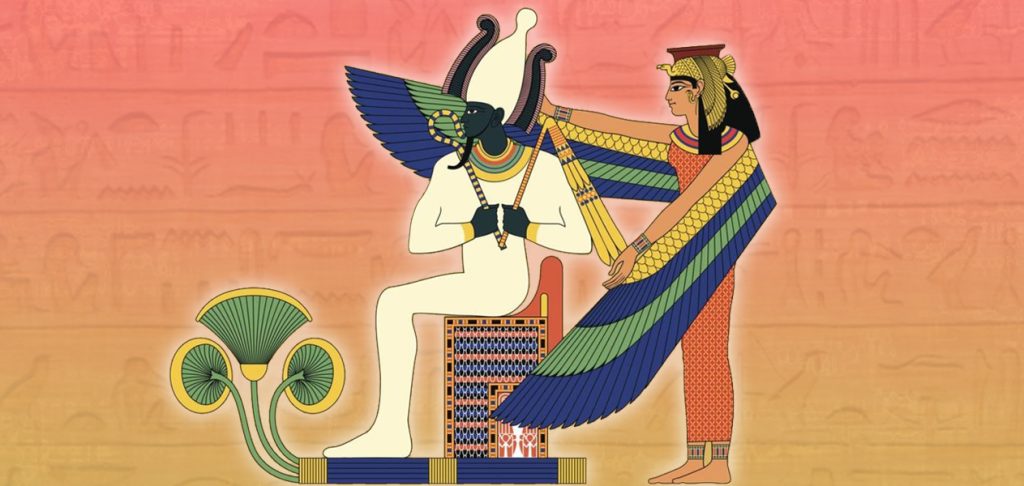The Acropolis is a karstic klippe—a chunk of Late Jurassic–Early Cretaceous limestone that broke free from its parent mountain and rode a thrust fault to rest atop a younger layer of Athens schist. This “allochthonous” journey left the caprock riddled with fissures that collect groundwater, creating the Klepsydra spring on the northwest slope—vital for every settlement that followed. Erosion under-cut the softer schist, exaggerating the plateau’s sheer flanks and providing natural defense.
Ancient quarrymen exploited vertical joints to extract perfectly squared ashlars, while modern geologists map micro-fractures with ground-penetrating radar to predict rockfalls. Recent LIDAR surveys show the summit dips gently southward, guiding rainwater into hidden cisterns that once sustained siege garrisons.
🏺 Neolithic Roots and Mycenaean Citadel
Carbon-dated pottery shards attest to continuous habitation since c. 6000 BCE, when early farmers terraced the slopes to plant einkorn and barley. Around 1250 BCE the Mycenaeans erected a megaron-style palace ringed by a 760- m Cyclopean circuit wall of limestone boulders sometimes topping six meters. A single gate, approached by a ramp angled to expose attackers’ right sides, reveals sophisticated defensive planning.
Archaeologists have located storage pits packed with carbonized figs and imported Minoan libation vessels—evidence of palace-economy complexity. Though the palace itself vanished, the wall’s zig-zag course beneath today’s Propylaia still whispers of heroic-age power.
🛕 Archaic Acropolis
By the 7th century BCE, a nascent polis dedicated the hill to Athena Polias. Two early temples— the Hekatompedon and the Old Temple of Athena—rose in poros limestone, brightened with ochre and Egyptian blue. Processional ways sprouted korai statues, each bearing a peplos or pomegranate. The celebrated Calf-Bearer (Moscophoros), sculpted c. 570 BCE, embodies a fusion of piety and civic pride: a bearded donor offers a sacrificial calf yet smiles with aristocratic self-confidence.
Votive inscriptions record dedications by potters, hoplite officers, and even resident aliens, foreshadowing Athens’ inclusive yet hierarchical democracy. This sculptural garden ended abruptly when Xerxes’ troops torched the plateau in 480 BCE. The Athenians later buried the fire-blackened statues in a ceremonial pit—the Perserschutt—transforming trauma into a subterranean memorial that conservators still excavate piece by charred piece.
🔥 The Persian Sack and the Oath of Plataea
When the Great King’s army overwhelmed Salamis’ evacuating citizens, a skeleton garrison barricaded the Acropolis with wooden palisades lashed to the Mycenaean wall. Persian climbers scaled the north scarp, slaughtered defenders, and methodically burned every temple. Xerxes ordered the destruction filmed in royal annals as propaganda. In 479 BCE, victorious Greeks at Plataea swore never to rebuild the shrines so scarred until Persia was forever repelled—an oath kept for three decades. The charred colonnades stood as moral exhibit: piety betrayed breeds hubris’s downfall; endurance breeds rebirth.
🏗️ The Periclean Building Programme
After the Delian League’s treasury moved to Athens, clerks recorded 3,000 talents (≈ 78 metric tons of silver) earmarked for the works—funds siphoned from allied tribute. Pericles argued that as leader and defender, Athens could spend “its own” money. Critics decried imperial vanity, but pay records show the project employed at least 5,000 artisans at peak, distributing wealth to citizens and metics alike.
Stonecutters reopened the ancient Penteli quarries ten km away, carving 20-ton drum segments that sledged downhill on oiled wooden rails, then floated on barges to the Piraeus. A custom ramp—traces still visible—snaked up the western slope, and a wooden crane, pivoting on a bronze-plated collar, lifted blocks into place. Each fluted shaft is ten drums; iron clamps filled with molten lead absorb shear stress, a technique restorers still imitate in titanium.
The Monuments
- Parthenon: Doric exterior, Ionic inner frieze; subtle 2¾-inch stylobate camber neutralizes optical sag. The cella housed Athena Parthenos—a chryselephantine giant by Phidias whose ivory flesh plates were removable for cleaning.
- Propylaia: Architect Mnesikles offset its north wing to preserve sacred precincts, inventing a pin-wheel plan that guided influx and egress like a ceremonial funnel.
- Temple of Athena Nike: Iconic for its parapet relief of winged Victory adjusting her sandal—an intimate moment that humanizes divinity.
- Erechtheion: Multilevel floorplan accommodates a trident cleft said to mark Poseidon’s strike and the Pandrosion olive sprout gifted by Athena. The Caryatid Porch’s six maidens bear 7-ton entablatures while draped in wind-pressed chitons that double as load paths.
🎠 The Panathenaic Procession and the Parthenon Frieze
Every four years, in Hekatombaion, Athenians celebrated the Greater Panathenaia. The 160-metre Parthenon frieze freezes this civic ritual: west blocks muster 192 mounted ephebes; north and south flanks show charioteers, musicians, and metics bearing hydriae; east panels climax with priestesses presenting the new peplos to seated Olympian gods, miniaturized to human scale to emphasize civic-divine intimacy. Scholars debate whether the scene depicts a historic procession—the salvation of Athens from the Persian threat—or an ideal cycle repeated eternally. Prize boxes in the Agora archive reveal victors in men’s boxing received 60 amphorae of sacred olive oil—roughly 600 gallons—while pentathletes earned patterned shields.
🗡️ Hellenistic, Roman, and Byzantine Transformations
Macedonian garrisons added siege-proof towers; Hellenistic kings sponsored bronze equestrian statues; Roman Hadrian funded repairs and dedicated reliefs honoring his philhellenic policies. By the 5th century CE, the Parthenon became the Basilica Santa Maria Atheniensium, nave aligned east-west, mosaics gleaming where cult statue once stood. When crusader Otto de la Roche carved out the Duchy of Athens (1204), he raised a Frankish bell tower above the opisthodomos; Catalan Company mercenaries later quartered troops in the naos. Yet the structure endured—testament to Greek engineers’ foresight in load distribution and clamp metallurgy.
✝️ ➔ ☪️ Ottoman Acropolis and the Venetian Bombardment
When Sultan Mehmet II captured Athens (1456), he spared the hill, converting the Parthenon into Hünkar Camii—the Sultan’s mosque—adding a minaret at the southwest corner but leaving columns intact. Ottoman steward Yusuf Ağa listed 400 Koranic volumes in the mosque library, while European travelers sketched the curious Christian icons under Islamic stucco. In 1687, Venetian general Francesco Morosini besieged Athens to destabilize Ottoman shipping lanes. A mortar shell struck the Parthenon’s powder magazine on 26 September, detonating 300 barrels of gunpowder. The roof, 20 columns, and much of the east and south friezes collapsed, showering fragments down the slope. Eye-witness Johann Babtist Wurmdobler likened the blast to “Mount Etna disgorging marble.” Ironically, Morosini’s attempt to haul surviving sculptures to Venice ended with cranes snapping and statues smashing on the North Slope scree.
💎 The Elgin Marbles and the Ethics of Ownership
Between 1801 and 1812 Lord Elgin’s agents removed 75 m of frieze, 17 metopes, and a Caryatid. Ottoman firman legality remains contested; surviving Italian copies suggest lost sections included a unique depiction of an Amazonomachy in metope VII. Elgin’s crates languished in lemon-juice baths that etched delicate relief; nevertheless, the British Museum purchased the haul in 1816. Greek governments since 1832 have sought repatriation; polls in the U.K. (2024) show 68 % public support for return. The Acropolis Museum’s top-floor Parthenon Gallery—rotated 23° to align with the temple—displays original blocks beside stark white plaster casts, creating a visual indictment of absence.
🛠️ Science and Conservation: 1975 – Present
The Acropolis Restoration Service (YSMA) launched in 1975 after rusting 19th-century iron clamps split marble along the grain. Engineers now use titanium rods—strong, inert, and reversible. Digital photogrammetry produces micrometre-scale 3-D models guiding stone anastylosis. Missing flutes are patched with Pentelic marble from the original quarry—its crystal lattice and iron-oxide veins match the parent block. Laser teams fire three wavelengths in succession (infrared to dislodge soot, ultraviolet to vaporize biofilm, green for limestone crust), revealing once-invisible carving lines. By 2025 the Nike temple stands fully restored, the Erechtheion Caryatids breathe in climate-controlled cases, and 300 tonnes of Parthenon blocks await re-assembly. Funding blends EU cultural grants, private philanthropy, and ticket surcharges (€20 peak-season).
🌍 Tourism, Climate, and Carrying Capacity
Visitor counts reached 23 million annual entries in 2023—triple 2009 numbers. Starting August 2024, the Hellenic Ministry introduced 20,000 daily cap and hourly quotas (e.g., 3,000 slots at 08:00, 2,000 at noon). Smart queue apps now alert guides to heat-stress closures when rock-surface temperatures exceed 48 °C. To mitigate erosion, boardwalks hover above ancient bedrock; new LED lighting cuts night-time insect swarms that nibble marble patina. Environmental studies predict Acropolis limestone may lose 3 mm of surface detail per century under current acid-rain levels—accelerated by cruise-ship sulfur plumes from Piraeus. Proposals for a remote-reality cap, charging discounted tickets to 8 K digital tours, pit access equity against onsite revenue needs.
🧭 Conclusion: Living Rock, Living Questions
The Acropolis began as a fault-lifted limestone mesa and became the visible heart of a city that invented theater, trial by jury, and the notion that citizens shape their own destinies. Its architecture was never frozen; pediments morphed from gigantomachy to crucifixion, from crescent moon to cross to crescent again. Each generation re-imagined the hill yet could not escape its gravitational pull. Today restorers with lasers and algorithms labor beside crowds snapping selfies, and the ancient stones pose fresh dilemmas: Who owns fragmented beauty? Can tourism fund salvation without eroding the very marvel it admires? Will rising heat and pollution outpace restoration? Like Athena’s olive tree that sprouted defiantly after Persian flames, the Acropolis teaches resilience—rooted in rock yet always growing new branches for the questions of tomorrow.
Sources Consulted
- Parthenon Frieze entry, Perseus Digital Library. (Parthenon Frieze (Sculpture))
- “Erechtheion,” Wikipedia & Acropolis Museum dossier. (Erechtheion – Wikipedia, The Erechtheion | Acropolis Museum | Official website)
- “Geology of the Acropolis,” ResearchGate paper & Mountain Beltway blog. ((PDF) The geology of the Acropolis (Athens, Greece) – ResearchGate, Geology of the Acropolis (Athens, Greece) – Mountain Beltway)
- “Panathenaic Prize Amphora,” AncientWorldMagazine & Harvard Art Museums. (Competing for olive oil – A Panathenaic prize amphora, Panathenaic Prize Amphora (storage jar) | Harvard Art Museums)
- “Parthenon Frieze,” Ancient-Greece.org & WOU research PDF. (The Parthenon Frieze – Ancient Greece: Φώς & Λέξη, [PDF] The Parthenon Frieze: – Western Oregon University)
- “The Unusual Erechtheion,” JSTOR Daily. (The Unusual, Unexpected Erechtheion – JSTOR Daily)
- “What Lies Beneath the Acropolis,” NAU in Greece blog. (What lies beneath the Acropolis?)
- New Acropolis Museum architecture records, ArchDaily & Architectural Record. (New Acropolis Museum / Bernard Tschumi Architects – ArchDaily, New Acropolis Museum | 2009-10-19 – Architectural Record)
- MDPI study on Acropolis hill stability. (Investigating the Stability of the Hill of the Acropolis of Athens … – MDPI)
- Euronews & AP coverage of visitor caps and heat closures. (The Parthenon Frieze – Ancient Greece: Φώς & Λέξη, The Lovely Stones)
- “Greek Gifts,” New Yorker feature. (Greek Gifts)
- “Greek Gifts” & “Lovely Stones” essays on restoration ethics. (Greek Gifts, The Lovely Stones)











































